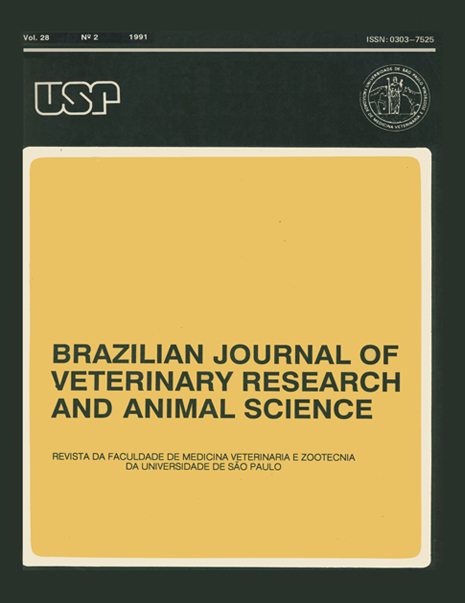Heterosis in preweaning traits in swine
DOI:
https://doi.org/10.11606/issn.1678-4456.bjvras.1991.51943Keywords:
Breeding of swine, Genetic (heterosis)Abstract
Individual weights at birth (PO), 21 days(P21) and weaning (PD) of 746 piglets, being 201Landrace, 136 Wessex-Saddleback and 409 crossbred were analysed by the least squares method. Estimates of heterosis and weight gains were obtained by a fixed model considering the effects of year and season at birth, litter order, sex and litter sizes, besides paternal and maternal breed effects. The effects were significant and the crossbred piglets were heavier than purebreds. Heterosis estimates were 2.6% for PO, 9.7% for P21 and 13.9% for PD, indicating higher no additive gene effects when the age of piglets increase or their dependence on maternal hability becomes less important. Interactions between maternal and paternal breeds were significant. The results indicate that crossbreeding these two breeds is useful for piglets production.
Downloads
Downloads
Published
Issue
Section
License
The journal content is authorized under the Creative Commons BY-NC-SA license (summary of the license: https://





